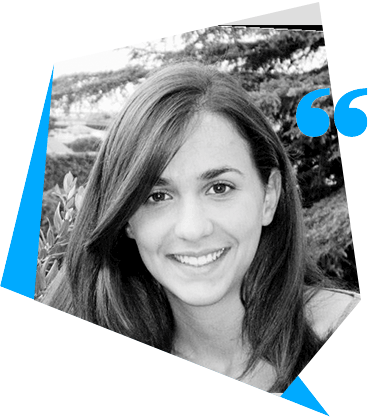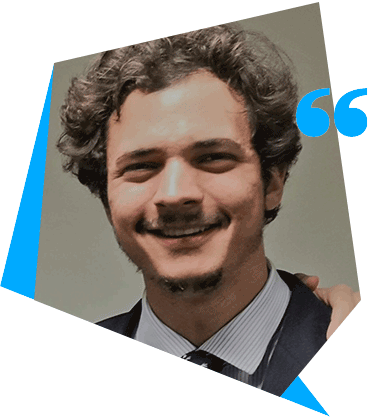< back to testimonials
Participation of 3 students in the PEGASUS 2021 conference
Published on
The PEGASUS student conference provides an opportunity for students to practice presenting papers at scientific meetings. The ISAE-SUPAERO Foundation, thanks to the donations of the donors, has financed the participation of 3 students from ISAE-SUPAERO to present their work from April 12 to 16, 2021.

The Pegasus Conference
The purpose of the conference is to provide a forum for aerospace students from several European universities to present technical papers in a public competition for 1st, 2nd and 3rd place awards in the graduate category. The conference is used to give students the opportunity to practice presenting technical work at meetings.
From April 12-16, 2021, 24 highly motivated and talented students from top aerospace universities across Europe participated in the online conference by presenting a scientific paper and their work done exclusively during their master thesis.
Three students were selected to represent ISAE-SUPAERO and are now graduates:
– Elisa Carli, Master in Aerospace Engineering, graduated in 2020
– Jose Felix ZAPATA USANDIVARAS, Master in Aerospace Engineering, graduated in 2020 and currently in the first year of his PhD
– Manuele Dassié, Master in Aerospace Engineering, graduated in 2020
THE testimony of elisa carli

“IMPROVING THE PERFORMANCE OF SPACE SCATTEROMETERS USING DIGITAL BEAMFORMING TECHNIQUES”
Specifically, I did my master’s thesis in collaboration with the Payload Engineering Section, Electrical Department, of ESA’s European Space and Technology Centre (ESTEC) in Noordwijk, the Netherlands. The section works on payloads for telecommunications, navigation and Earth observation. My activity focused on the design, modeling, analysis and performance evaluation of future space-based Earth observation remote sensing instruments, in particular scatterometers. These instruments, which are real aperture radars, have been flying for several decades and provide a wide variety of information on Earth processes, for example for weather, climate or security applications. Two of the most important geophysical parameters obtained from scatterometer observations are the direction and intensity of winds blowing over the oceans and ocean surface currents. “
In this context, the ISAE-SUPAERO Foundation plays a very important role. By providing financial support, it motivates students to attend this type of conference.
It allows us to attend conferences without any financial concerns, so we can focus solely on the quality of the work presented and on making new and lasting connections.
Although this year the conference is entirely online, the ISAE-SUPAERO Foundation has decided to contribute by financing our participation. Of course, after an entirely online Master’s thesis, it was unfortunate to attend an online conference, as presenting and meeting people in person would have been more effective from a personal and professional standpoint. However, there are some positive sides to a fully online event, i.e., there were no expenses related to travel or lodging. This opens up a new range of possibilities for how the Foundation’s funding can be used. The idea I have in mind is simple but extremely useful. The subject of my master’s thesis completely captured my attention, but I felt that I lacked information on the specific ocean dynamics observed by the instruments I was optimizing. I still have no sensitivity on the scientific requirements for the estimated geophysical parameters and I have no knowledge on the interaction between them. What characteristics can we observe with state-of-the-art performance? What can we expect to see at finer resolutions? Are there models or in situ campaigns already collecting data to validate future space missions? I plan to start a course, probably online, on physical oceanography to understand how this complex and fascinating field works. After gaining an overview, I would focus on current recovery. I would like to further my knowledge on this topic and become an active researcher in this area. Ultimately, I would be able to bridge the gap between the scientific requirements and the actual design of the instrument. The knowledge gained during the internship added to the future course will allow me to broaden my background to be ready for the next step in my career.
What did the PEGASUS conference bring you?
My participation in the conference allowed me to evolve from a scientific and personal point of view. Indeed, writing a scientific paper and presenting the results in front of a very competent audience is something we need to get used to when we want to start a career in the research field, but it is something we need to practice and improve upon when we leave university. The help and guidance we received from the school’s organization team was essential in making the deliverables look more professional.
Thank you very much for this opportunity, it was the best way to conclude my years at ISAE-SUPAERO
THE testimony of Jose Felix zapata usandivars

“APPLICABILITY OF RADIATION MODELING FOR DIRECT COMPARISON OF SIMULATIONS WITH EXPERIMENTS”
As a PhD student at ISAE-SUPAERO, participating in the conference allowed me to expand my network in the field of my research. Specifically identifying the institutions that participated in the conference with which I may have a shared research focus.
I would like to thank the Foundation deeply for its support and I hope that in the future there will be other examples of collaboration between us.
THE testimony of manuele dassié

“RELATIVISTIC MODELING FOR HIGH PRECISION TELEMETRY AND TIME TRANSFER VIA OPTICAL INTER-SATELLITE LINKS”
This work focuses on relativistic time transfer schemes based on optical signal exchange, which allow the synchronization of a constellation of GNSS satellites with picosecond accuracy.
The continuous feedback has allowed me to significantly improve my presentation of complex concepts, both in written and oral form. These are fundamental skills to be a valuable employee at DLR.